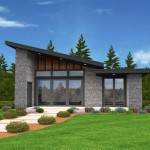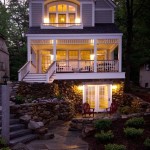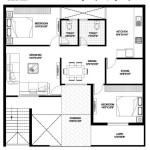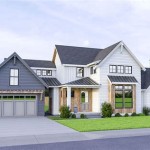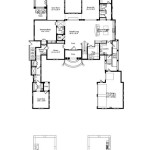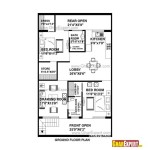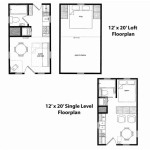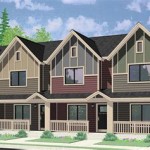How To Create Floor Plans For Free
Creating a floor plan is a fundamental step in various projects, from renovating a home to designing an office space or simply visualizing furniture arrangements. While professional architectural software offers advanced features, several free options are available that empower individuals to create accurate and aesthetically pleasing floor plans without incurring any financial cost. This article outlines various approaches and tools for creating floor plans for free, emphasizing the functionalities and limitations of each.
Using Online Floor Plan Builders
Numerous online platforms offer free floor plan creation tools. These web-based applications generally provide a user-friendly interface with drag-and-drop functionalities, pre-designed room templates, and a library of furniture and fixture elements. The appeal of these online builders lies in their accessibility – they require no installation and can be accessed from any device with an internet connection and a web browser.
One popular option is Planner 5D. While Planner 5D offers a paid subscription with access to a wider catalog of items and features, its free version allows users to create basic 2D and 3D floor plans. Users can draw walls, add doors and windows, and place furniture from a limited but usable selection of objects. The intuitive interface makes it relatively easy for beginners to learn and use effectively. Another example is RoomSketcher. Similar to Planner 5D, RoomSketcher provides a free version with limitations on the number of projects and features accessible. This free version is usually useful for smaller projects or for creating concept floor plans.
When using online floor plan builders, it is crucial to consider the following: Accuracy depends heavily on the user's input. Accurate measurements are paramount to producing a realistic and functional floor plan. It is also worth noting that free versions of these online platforms often come with advertisements or watermarks on the final output. The availability of customization options may be limited compared to paid versions or professional architectural software. Project limitations regarding the number of saved projects may also hinder the creation of numerous plans.
The workflow for using these online tools typically involves: Establishing the outer dimensions of the space and drawing the external walls. Dividing the space into rooms by drawing interior walls and adding doors and windows. Populating the rooms with furniture and fixtures from the available library. Adding labels and dimensions to the floor plan. Some tools permit generating 3D renderings, providing a more realistic view of the design.
Employing Free CAD Software
Computer-Aided Design (CAD) software, although typically associated with professional architects and engineers, also offers free alternatives that can be used to create floor plans. These free CAD programs provide more control and precision compared to online floor plan builders, but they also come with a steeper learning curve. Open-source CAD software such as LibreCAD and FreeCAD offer robust drawing capabilities and allow users to create detailed 2D and 3D floor plans.
LibreCAD is a 2D CAD program that is suitable for creating technical drawings, including floor plans. It supports a wide range of file formats, including DXF, which is a common format for CAD drawings. FreeCAD, on the other hand, is a parametric 3D CAD modeler that can be used to create more complex floor plans and models. It supports a variety of file formats and offers a wide range of features, including tools for creating architectural elements.
Unlike online floor plan builders, CAD software requires installation on a computer. This provides the user with more control over the software and data, although it is important to ensure that the computer meets the minimum system requirements. The primary advantage of using free CAD software is the ability to create highly accurate and detailed floor plans with precise measurements and customized elements. These programs also offer more flexibility in terms of exporting the floor plan in different formats, compatible with other software or printing purposes.
The workflow for using free CAD software to create floor plans usually includes: Setting up the drawing environment, including units of measurement and scaling. Drawing the walls using lines, arcs, and other geometric shapes. Adding doors, windows, and other architectural elements. Dimensioning the floor plan to indicate the size of rooms and elements. Layering the drawing to organize different elements and improve clarity. Free CAD software often has a less intuitive interface compared to online floor plan builders. New users usually require time and effort to learn the basics of CAD drawing.
Utilizing Free Graphic Design Software
While not specifically designed for creating floor plans, free graphic design software like Inkscape can be adapted for this purpose. Inkscape is a vector graphics editor that allows users to create and edit images using lines, shapes, and text. While it lacks pre-designed floor plan elements, its drawing tools can be used to create accurate representations of rooms and spaces.
Using Inkscape for floor plans involves drawing the walls as lines, adding doors and windows as rectangles or other shapes, and inserting furniture as imported images or vector drawings. The software allows for precise control over the size, position, and orientation of each element. Text tools can be used to add labels and dimensions to the floor plan. The primary benefits of using graphic design software like Inkscape are its free availability, flexibility in terms of design, and compatibility with various file formats. Inkscape enables customization beyond the constraints of templates found in online floor plan builders.
The workflow for creating a floor plan with graphic design software usually includes: Setting up document dimensions and background grid. Drawing the walls using line tools. Creating doors and windows using rectangles and other shapes. Importing or creating furniture and fixture elements. Adding text for labels and dimensions. Grouping related elements to facilitate movement and manipulation. Saving the floor plan in a suitable file format such as SVG or PDF. The disadvantage of using graphic design software for floor plans is the lack of specialized tools for creating architectural elements. This requires the user to manually draw all the elements, which can be time-consuming and require some drawing skills.
Creating a free floor plan requires considering the project's complexity and the level of detail required. Online floor plan builders offer ease of use and a quick way to visualize a space but might lack precision and customization. Free CAD software provides greater control and accuracy, but it involves a steeper learning curve. Graphic design software can be adapted for floor plans but requires manual drawing and may not be the most efficient method. Each approach offers unique benefits and limitations, and selecting the right one depends on the individual's skills, time availability, and the project's specific requirements.
No matter the method chosen, accurate measurements are the foundation of any successful floor plan. Prior to using any software or tool, it is crucial to accurately measure the dimensions of the space being planned. Using a laser distance measure can improve accuracy. It is also important to consider the placement of existing features, such as electrical outlets, plumbing fixtures, and structural elements when creating the floor plan. Attention to detail during the planning phase will ensure a more accurate and functional final result.
Key Considerations for Accuracy and Functionality
Regardless of the chosen method for creating a free floor plan, certain considerations are crucial for ensuring accuracy and functionality. These include: adhering to building codes and regulations, properly scaling and dimensioning the plan, and considering accessibility requirements.
Building codes and regulations vary depending on the location and the type of building. It is important to consult local building codes before creating a floor plan, especially if the plan involves structural changes or additions. Building codes specify requirements for room sizes, ceiling heights, egress routes, and fire safety, among other things. Failing to comply with building codes can result in costly rework or legal issues.
Scaling and dimensioning are essential for creating an accurate and usable floor plan. All elements of the plan should be drawn to a consistent scale, such as 1/4 inch = 1 foot or 1:50. Dimensions should be clearly indicated on the plan, showing the size of rooms, walls, doors, windows, and other features. Accuracy in scaling and dimensioning ensures that the floor plan accurately represents the actual space and that furniture and fixtures can be placed appropriately.
Accessibility is another important consideration, particularly for residential projects. Floor plans should be designed to accommodate individuals with disabilities, including those who use wheelchairs or have mobility limitations. This might involve ensuring adequate door widths, providing accessible routes throughout the space, and installing grab bars in bathrooms. Adhering to accessibility guidelines ensures that the space is usable by everyone.
Creating floor plans for free is a viable option for many projects. The advancements in online tools and free software provide alternatives to costly professional software. Careful consideration of the project's specific needs and the selection of the appropriate method, combined with attention to detail and accuracy, will result in a functional and visually appealing floor plan.

Floor Plan Creator Planner 5d

Floor Plan Creator And Designer Free Easy App

20 Best Floor Plan Apps To Create Your Plans Foyr

Floor Plan Creator Planner 5d

11 Best Free Floor Plan For 2024

Floor Plan Creator And Designer Free Easy App

Draw Floor Plans With The Roomsketcher App

Floor Plan Maker

Draw Floor Plans With The Roomsketcher App

Floor Plan Creator Planner 5d

